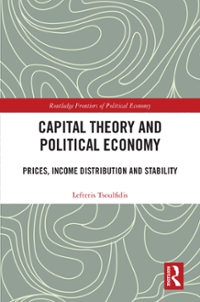Answered step by step
Verified Expert Solution
Question
1 Approved Answer
Suppose you are a policy analyst at the World Bank tasked with advising policymakers in a developing country about how to achieve higher consumption levels
Suppose you are a policy analyst at the World Bank tasked with advising policymakers in a developing country about how to achieve higher consumption levels in their economy. You use your knowledge of economic growth theory to calculate the savings rate that maximizes steady-state per capita consumption in the Solow growth model. Consider the standard Solow growth model. The production function is given, in each year , by: is also constant at . , the share of labor in production, is greater than 0 and less than 1. Capital accumulation is described by: +1 = + Where +1 is the stock of aggregate capital in year + 1, is the stock of aggregate capital in year , is the rate of capital depreciation, and is the flow of new investments in the economy in year . The economy is closed and there is no public spending. The resource constraint of the economy is + = Where is aggregate consumption in year . Finally, the economy saves a constant share of output in every year, so that the savings rate is . Given the constant savings rate and the economy's resource constraint, in every year total investment is equal to total saving, according to the equation: 1 , == () Where the number of workers in the labor force is constant at , and TFP (productivity) 1 = Answer the following questions: A. Derive the steady state level of capital per capita, *. We now want to derive the level of capital per capita * and savings rate that maximize consumption per capita in steady state, *. B. Derive an expression for the steady-state level of consumption per capita * in the Solow model as a function of the parameters of the model. C. Find the savings rate and the steady-state level of capital per capita (call this ) that maximize the steady-state level of consumption per capita. (Hint: take your expression in the previous part and maximize consumption per capita with respect to the savings rate). Is the "golden level" of capital per capita different from the one derived in part A? If so, why
Step by Step Solution
There are 3 Steps involved in it
Step: 1

Get Instant Access to Expert-Tailored Solutions
See step-by-step solutions with expert insights and AI powered tools for academic success
Step: 2

Step: 3

Ace Your Homework with AI
Get the answers you need in no time with our AI-driven, step-by-step assistance
Get Started


